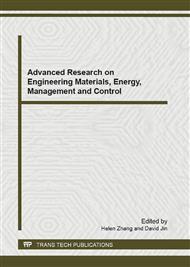p.48
p.52
p.56
p.61
p.69
p.73
p.77
p.81
p.86
Effects of Initiator and Catalyst on Properties of Dental Zirconia-Toughened Alumina Ceramic Base Crown Prepared by Gelcasting
Abstract:
Gelcasing has been recognized as a very high-potential method in fabricating complex-shaped ceramic products. In this contribution, the gelcasting process was applied to manufacture green body of dental zirconia-toughened alumina (ZTA) ceramic base crowns. As one of a series studies, this study was conducted to investigate the influence of initiator and catalyst concentrations on idle and processing time of gelcasting system and the strength of green and sintered body of ZTA ceramic base crowns. Six different groups were divided basing on different proportion of initiator (1-6 vol.%), and with different proportion of catalyst correspondingly. The results showed that when the initiator was 4vol.% and the catalyst was 8vol.% at room temperature, the time of solidified reaction and bisque properties were optimum and it also met the requirement of practical running time for shaping dental all-ceramic crown in lab.
Info:
Periodical:
Pages:
69-72
Citation:
Online since:
January 2012
Authors:
Keywords:
Price:
Сopyright:
© 2012 Trans Tech Publications Ltd. All Rights Reserved
Share:
Citation:


